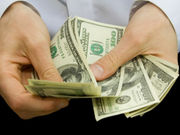Cooperation is key to program’s success, but benefits are modest
MONDAY, Nov. 9, 2015 (HealthDay News) — Patients who shared a financial incentive with their doctor to lower their levels of low-density lipoprotein (LDL) cholesterol achieved a statistically significant reduction after a year of treatment. These findings were published in the Nov. 10 issue of the Journal of the American Medical Association, a cardiovascular disease theme issue published to coincide with the annual meeting of the American Heart Association, held from Nov. 7 to 11 in Orlando, Fla.
The study involved 340 primary care physicians at three northeastern U.S. medical clinics, and 1,503 of their patients. All of the study volunteers were provided with an electronic pill bottle to track whether they took their statins on schedule. Each physician/patient team was placed into one of four groups. In one group, doctors were offered up to $1,024 for each patient whose cholesterol met a target goal. The second group offered the same cash reward just to patients who took their medication on time. The third group offered shared incentives. The fourth group served as a control group.
Only patients in the shared physician-patient incentives group achieved reductions in LDL cholesterol levels that were statistically different from those in the control group, the researchers found. However, the difference was just 8.5 mg/dL, which amounts to only a 4 percent reduction in cardiovascular events such as strokes or heart attacks, Pam Morris, M.D., told HealthDay. Morris is an assistant professor and director of preventive cardiology at the Medical University of South Carolina and chair of the Prevention of Cardiovascular Disease Committee for the American College of Cardiology.
“It was a very modest effect,” Morris said. “It raises questions about the cost-effectiveness of this model.” Morris also noted that most patients failed to take their medication even when offered cash bonuses. Average adherence rates were 39 percent in the shared-incentive group, and 34 percent in the patient-incentive group.
Copyright © 2015 HealthDay. All rights reserved.








